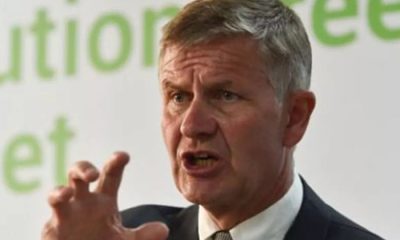Midweek Review
Solheim is back
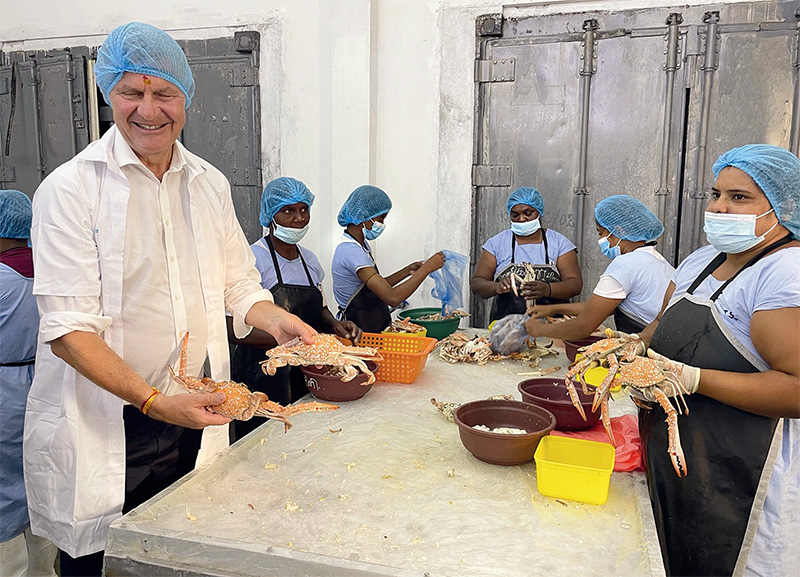
The Norwegians mollycoddled the LTTE. The way the government in Oslo went out of its way to appease the LTTE during the time it facilitated the peace process is unbelievable. Once a group of LTTE cadres visiting Norway was afforded an opportunity to see how the Norwegian military prepared for UN peacekeeping missions. Several weeks after the signing of the CFA in late Feb 2002, Balasingham and his Australian-born wife who had been pictured handing over cyanide capsules to female child soldiers arrived from London via Dubai and the Maldives to the Vanni in late March 2002. The Special Norwegian Peace Envoy Solheim and the then Norwegian Ambassador in Colombo Jon Westborg personally got involved in travel arrangements with Solheim accompanying the Balasingham’s from London to Dubai. It was quite a show.When Balasingham, a former Colombo British High Commission employee passed away in the UK in late Dec 2006, Solheim, in his capacity as the Norwegian International Development Minister was at Alexandra Palace in north London to pay his last respects. Balasingham departed the world three years before the Sri Lanka military eradicated the LTTE militarily in the battlefield itself.
Ex-SCOPP Chief on Solheim’s latest move
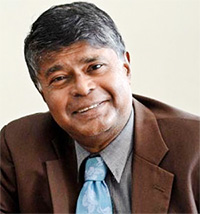 In response to The Island query, Prof. Rajiva Wijesinha, Secy General of SCOPP, sent us the following response: ” It was most entertaining to see Erik Solheim back in Sri Lanka, celebrating his dinner with his old friends Ranil and Maithree Wickremesinghe. Needless to say he reiterated what Mahinda Rajapaksa has been trumpeting, that Ranil did not run away when there was a crisis.
In response to The Island query, Prof. Rajiva Wijesinha, Secy General of SCOPP, sent us the following response: ” It was most entertaining to see Erik Solheim back in Sri Lanka, celebrating his dinner with his old friends Ranil and Maithree Wickremesinghe. Needless to say he reiterated what Mahinda Rajapaksa has been trumpeting, that Ranil did not run away when there was a crisis.
Of course Ranil did not run away, because he was prepared to swallow anything to revive his political career, even slavish adherence to the Rajapaksa forces, which confirmed him as Prime Minister under the President the country at large thought responsible for the crisis. These were not conditions anyone else could accept, though now they might regret that they did not know radical and not so radical forces would insist on the President going, and that his quondam hangers on realize that that would relieve the pressures on them and allow them to carry on as before.
Solheim, whose business instincts have always affected his political judgment, has not registered that the only improvement has been that the Sri Lankan government under Ranil has been able to borrow more money so as to pay for fuel, which is why that is available and power cuts have stopped. But when he says businesses were on the verge of collapse, he does not note that many businesses have indeed now collapsed, and that there have been no measures to improve productivity, not understanding that the only justification for more and more loans is to generate economic activity, not just more debt.
He claims inflation is low, but does not note how food prices rose so high that malnutrition has increased, and there is no effort to reduce this, instead the government is concentrating on selling off even profitable government undertakings. Ironically he ends his apology for an analysis with a Mahinda Rajapaksa catchphrase, doubtless now Ranil’s too, about a better future.
And then, to underline his point, after praising Ranil he also praises the dinner he enjoyed. It would be nice to know what he and his opulent globe trotting hosts ate, and how this compares with what most people have now to eat.”
By Shamindra Ferdinando
Attorney-at-Law Ambika Satkunanathan responded angrily on ‘X’ on May Day to a recent declaration made by former Norwegian International Development Minister Erik Solheim and top peace (or planned pieces) facilitator here during Chandrika Bandaranaike Kumaratunga’s tenure as the President that ‘Northern Sri Lanka is at peace.’
Solheim also commended the security situation in the northern region on ‘X’ posted on May Day following a recent visit to Jaffna and Kilinochchi where he met Northern Governor P.S.M. Charles and Illankai Thamil Arasu Kadchi (ITAK) leader Sritharan Sivagnanam.
Jaffna District parliamentarian Sivagnanam received appointment as the ITAK leader in late January this year. He comfortably defeated M.A. Sumanthiran PC in an internal party election. Sivagnanam succeeded Mavai Senathiraja.
Former Human Rights Commission member (Oct 2015-2019) Satkunanathan contradicted Solheim’s assertion.
She alleged that the Northern Province continued to be heavily militarized with security agencies carrying out surveillance, harassing and intimidating civil society and generally targeting those who defied the government. She claimed the targeted group included the media as well.
The Northern Province consists of the electoral districts of Jaffna and Vanni. The former LTTE stronghold Vanni comprises administrative districts of Mannar, Mullaithivu and Vavuniya. The last phase of combined security forces operations had been conducted in the Mullaithivu district where the war was brought to an end on the banks of the Nanthikadal lagoon in May 2009.
LTTE leader Velupillai Prabhakaran’s body was recovered from there on the morning of May 19, 2009.
Obviously Solheim, 69, was comparing the situation in the Northern Province during the war and now. Those who believed in the LTTE’s military invincibility were shocked and surprised when the Army brought back the Tiger stronghold Kilinochchi under government control in early January 2009 following two years of sustained operations in the eastern and northern theatres. The rest is history.
So-called human rights activist Satkunanathan reacted to only a section of Solheim’s statement. In fact, it was one of the three statements made by the Norwegian during his recent visit.
Satkunanathan faulted Solheim for praising the security situation in the Northern Province. One should understand Satkunanathan, with obvious Eelam sympathies, for being critical of Solheim, who now functions as Wickremesinghe’s International Advisor on Climate Change, and no longer towing the wholesale tilted line to their cause.
It would be better if key points in that statement were mentioned: (a) He visited Jaffna after a lapse of over 20 years (b) Many of his Sinhala and Tamil friends and colleagues were killed (c) delighted to discuss political developments with Sivagnanam whom the Norwegian described as the new top Tamil leader (d) Northern Province peaceful and no one wants to return to the situation experienced during the war (e) Many Tamil aspirations haven’t been fulfilled (f) wartime disappearances remain a major cause for concern (g) Some land taken over by the government/military during the war yet to be returned (h) disputes continue over historic religious sites (i) unemployment in the Northern Province remains an issue (j) Sri Lanka will have to devolve power (emphasis mine) and finally (k) struggle for Tamil rights would continue through non-violent means.
The second Solheim statement was headlined ‘The man who didn’t run away’. The Norwegian was referring to President Ranil Wickremesinghe, the leader of the UNP.
Solheim declared: (a) President Wickremesinghe pulled off a political miracle after the people ousted Gotabaya Rajapaksa over mounting economic crisis (b) Difficulties remain though further improvements can be expected (c) Wickremesinghe accepted the daunting challenge regardless of consequences. That statement, according to Solheim, was issued after he had a delicious dinner with his old friends President Wickremesinghe and first lady Maithriee Wickremesinghe.
Solheim received the appointment as Wickremesinghe’s Advisor on Climate Change within weeks after Parliament voted to have him as the eighth Executive President to complete the remainder of ousted Gotabaya Rajapaksa’s five-year term. Soon after receiving the appointment, Solheim declared that going green and finding a solution through the 13th Amendment to the Constitution could help Sri Lanka recover from its economic and political crisis.
There had been a third statement that dealt with Solheim’s visits to Taprobane Seafoods (Pvt) Ltd. production facilities in Jaffna and Mannar. Solheim, in a May 03 message on X, noted how Tamil women, who lost their husbands and other members of their families, benefited from the Taprobane factories. Solheim should be reminded of the mindless death and destruction caused by Tamil women who fought for the LTTE, including suicide cadres. The Norwegian has also forgotten how thousands of children, both male and female, who had been forcibly recruited by the LTTE, were used as cannon fodder.
The entire world realized the despicable use of children when a brainwashed LTTE female teenage suicide cadre blew up former Indian Prime Minister Rajiv Gandhi on May 21, 1991, as he campaigned, in Southern India, in the run up to the Indian general election.
Let me discuss Solheim’s assertions (both commendations and concerns) in the current context, also taking into consideration the Norwegian peace mission here.
Solheim on 13 A
The Norwegian’s declaration that Sri Lanka would have to devolve power in terms of the 13th Amendment to the Constitution that has been forced on Sri Lanka, by India, underscores the continuing Norwegian stand on the contentious issue. The decision on the part of President Wickremesinhe’s Advisor on Climate Change to discuss devolution of power, political developments and other related matters, including the security situation, cannot be acceptable. Solheim’s declaration that the Tamil struggle would continue through non-violent means must receive the attention of political parties represented in Parliament.
Perhaps, Solheim has to be told to stick to the subject Climate Change assigned to him by President Wickremesinghe instead of seeking to revive a needless bloody conflict here once again and especially reminded that the ITAK recognized the bloodthirsty LTTE as the sole representative of the Tamil speaking people during the time Norway facilitated the highly questionable peace process here and that tag of ‘sole representative’ remained until the military eradicated the Tiger terrorism from here. There is no doubt Solheim was one of those ill-advised diplomats or a deliberate hatchet man, who repeated their mantra that the LTTE couldn’t be militarily defeated. A section of the media, too, propagated the lie that the LTTE tactics were far superior to that of the military and whatever the territorial gains made by the military on the Vanni front could be undone.
The very basis of the Norway arranged Ceasefire Agreement was that the LTTE couldn’t be defeated. Therefore, a negotiated settlement has to be finalized even at the expense of the country’s national interest as the LTTE exercised undefeatable conventional military capability. Solheim was one of the crowd who regularly tried to drum into us that the LTTE could swiftly and decisively overwhelm the military on the Vanni east front. The eradication of the LTTE leader and his bodyguards on the banks of the Nanthikadal lagoon must have come as quite a shock to Solheim, who was one of the few foreign diplomats given access to Velupillai Prabhakaran.
However, at the time Solheim spearheaded the Norwegian effort, Norway openly asserted that the 13th Amendment was insufficient. With the backing of the ITAK, the LTTE demanded ISGA (Interim Self Governing Authority) pending finalization of a negotiated settlement but today interested parties quite conveniently have forgotten how the LTTE quit the CFA in late April 2003. That move was meant to sabotage peace negotiations and create an environment for the then President Kumaratunga to sack the UNP-led government. As the LTTE anticipated, the SLFP-led UPFA won the general election and in the following year the internationally proscribed group ensured Mahinda Rajapaksa’s victory at the presidential poll by depriving Ranil Wickremesinghe of the northern vote. The LTTE set the stage for Eelam War IV thinking it would be a cakewalk for them against a government led by Mahinda Rajapaksa. But Rajapaksa was made of much sterner stuff as he has proved from his school days.
The civil society remained silent as the LTTE resumed mine attacks in the Northern Province in Dec 2005 and in the following month blew up the Shaldag class Fast Attack Craft (FAC) off Trincomalee. The Mavilaru dispute erupted a few months later and war was inevitable. Between destruction of the FAC and Mavilaru confrontation, the LTTE made an abortive bid to assassinate the then Lt. General Sarath Fonseka, Commander of the Army. Soon after Eelam War IV erupted, the LTTE made an attempt on the life of Defence Secretary Gotabaya Rajapaksa. Had the LTTE succeeded in eliminating Lt. Gen. Fonseka and Gotabaya Rajapaksa, most probably, they could have had an opportunity to overwhelm the government. But, their strategy went awry in the wake of unsuccessful suicide missions. Both having miraculously survived the deadly attacks prosecuted the war with new vigour against the Tigers.
Norwegian tendency to go with the LTTE was revealed when Velupillai Prabhakaran assassinated the then Foreign Minister Lakshman Kadirgamar in early Aug 2005. The then Norwegian Foreign Minister Jan Petersen declared that: “The killing puts the peace process to a serious threat. It is now of great importance that both parties to the conflict do their utmost to fully fulfil their obligations according to the CFA.” That statement was in line with the stand taken by the Western powers and India that the assassination of Kadirgamar shouldn’t in any way hinder the so-called peace process. They also demanded the implementation of Post-Tsunami Operational Management Structure (P-TOMS). The UN Security Council, under Japanese leadership, insisted on the implementation of the CFA.
If the LTTE hadn’t declared all-out war in August 2005 and ultimately succumbed to relentless military onslaught, it could have had control of the Northern and Eastern Provinces with the backing of Western powers.
The writer sought the Executive Director of National Peace Council (NPC) Jehan Perera’s response to Solheim’s latest intervention. The ever obliging Dr. Perera sent us the following statement and is reproduced verbatim without any alterations. “Mr Solheim is reflecting the fact that more needs to be done. He sees Jaffna as being a better place than it was during the war. He tried to bring that war to an end through the ceasefire agreement of 2002 in which he and the President were two key architects. The affection and admiration that Solheim feels for the President is evident in what he says. He also poses a challenge to the President when says that much remains to be done. The question is whether the President can take up this challenge in the spirit of what needs to be done — and create trust in the Tamil community, an enabling environment for what needs to be done and develop a holistic plan for the future with multi-party engagement and consultation.”
Architect of CFA
Among those who met Solheim during his recently concluded visit were SLPP MP and its National Organizer Namal Rajapaksa and Basil Rajapaksa. What has Presidential Advisor on Climate Change got to do with the Rajapaksas? What the Norwegian had to discuss is unclear as he, too, obviously believed the Rajapaksas caused the war and were responsible for the death and destruction.
During a discussion the writer had with the late Kumar Rupesinghe at his residence in Colombo, the prominent civil society activist named Solheim as the person who actually drafted the CFA. When the writer doubted Rupesinghe assertion that if not for Solheim, the 2002 CFA couldn’t have been finalized, he offered me a copy of ‘Negotiating Peace in Sri Lanka: Efforts, Failures and Lessons (Volume Two) edited by him.
There were interviews with and articles by Bradman Weerakoon, Austin Fernando, Prof. G.L. Peiris, Priyan Seneviratne and Dinidu Endaragalle, Hagrup Haukland, Dharmnaratnam Sivaram, Gayathri Wickramasinghe, Saman Kelegama, Sunil Bastian, Sumanasiri Liyanage, Bernard A.B. Goonatilleke, M.I.M. Mohideen, Erik Solheim, Keith Noyahr and N. Ram.
In response to a query posed by Rupesinghe, Solheim, in his capacity as International Development Minister, has explained the circumstances under which the CFA subsequently called a flawed document by Lakshman Kadirgamar was finalized.
Solheim disclosed how he had discussed the provisions of the proposed CFA agreement with the LTTE theoretician in London, the late Anton Balasingham, and Prof. Peiris and Milinda Moragoda (both members of the government negotiating team) in Colombo before he drafted a new proposal. Let me reproduce the relevant section verbatim. The interviewer Rupesinghe quoted Solheim as having said: “…. The two parties made a lot of changes and brought it back to us and it was discussed orally. Then again I drafted a new proposal, which took about two months. It was signed on the 22nd of February. A period of 6-8 weeks was spent on discussions and writing the agreement.”
That interview certainly explained Solheim’s thinking and how he spearheaded the Sri Lanka mission on the invitation of the LTTE. Solheim discussed their role here against the backdrop of Norwegian involvement in similar endeavours following the end of the Cold War, especially in Palestine.
Solheim briefly discussed the Norwegian mission in Sudan and the Israel-Palestine deal which he called the most famous out of various peace projects.
At the time the LTTE reached Solheim; he had been a member of the Foreign Policy Committee of Norwegian Parliament and was in touch with various parties involved in the Sri Lanka conflict, having first visited Colombo in 1999. By then, the LTTE had been in a commanding position in the North but the group sought internationally guaranteed agreement to allow evacuation of Anton Balasingham, who needed urgent medical attention overseas. Though the initiative inspired by the LTTE failed to materialize, the LTTE got Balasingham out of Sri Lanka through other means to ensure he received the required treatment in Thailand before being moved to Norway. The Balasinghams left the Vanni in late January 1999.
The CFA was meant to create a separate region under LTTE control in the Northern and Eastern Provinces. The Scandinavian truce monitoring mission simply did nothing to ensure the implementation of the CFA. Taking cover of the CFA, the LTTE brought in ship loads of arms though the Navy twice intercepted and destroyed LTTE vessels. The group expanded a network of runways for its fledgling air force in the Vanni as the government foolishly further strengthened the group. It facilitated the acquisition of powerful radio equipment while transfer of brand new double cabs were also allowed much to the dismay of the military. The LTTE always had its way until President Mahinda Rajapaksa decided to put an end to the separatist terrorism.
In the wake of Solheim’s declarations, New Delhi-based Norwegian Ambassador Mrs. May Elin Stener, also accredited to Sri Lanka, was here accompanied by Johan Bjerkem, the Second Secretary of the Norwegian Embassy. The Norwegian envoy’s visit here was the first since Norway closed its Embassy in Colombo following the Gotabaya Rajapaksa government pulling out the Lankan missing in Oslo.
Ambassador Stener met Opposition Leader Sajith Premadasa and JVP leader Anura Kumara Dissanayake among others. Norway seems interested in expanding its role as Sri Lanka prepares to go for presidential polls.
Midweek Review
Batalanda and complexities of paramilitary operations
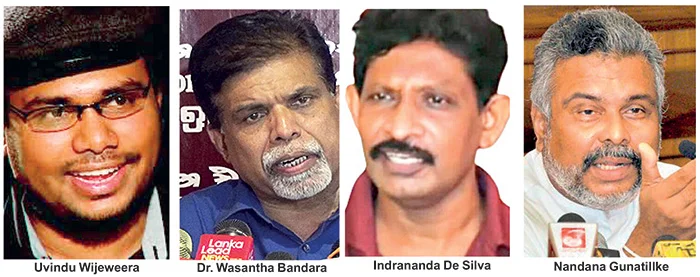
Former President Ranil Wickremesinghe’s recent combative ‘Head-to-Head’ interview with British-American Mehdi Hasan on Al Jazeera has opened a can of worms. As to why Hasan raised the Batalanda Presidential Commission report, during a 49-minute interview conducted at the London’s Conway Hall, with a clearly pro LTTE audience, remains a mystery. This must be yet another notorious way to show how even-handed they are as in the case of its coverage of Russia, China, Palestine or Ukraine for their gullible viewers.
Recorded in February and aired in March 2025, the interview is definitely the most controversial the UNP leader, who is also an Attorney-at-Law, ever faced during his political career; always used to getting kid glove treatment, especially after taking over the party in 1994.
The continuing public discourse on Batalanda should provoke a wider discussion on Sri Lanka’s response to separatist Tamil terrorism, since the cold blooded murder of Jaffna SLFP Mayor Alfred Duriappah, which signalled the beginning of the LTTE terror campaign that ended in May 2009 with the crushing military defeat of the Tigers on the banks of the Nathikadal lagoon, as well as two southern insurgencies in 1971 and 1987-1990.
As Nandana Gunatilleke (one time JVP General Secretary and ex-MP), Dr. Wasantha Bandara (ex-JVPer and close associate of the slain JVP leader Rohana Wijeweera), Indrananda de Silva (ex-JVPer, incumbent Central Committee member of Frontline Socialist Party [FSP] and ex-military photographer) and Uvindu Wijeweera (Rohana Wijeweera’s son and leader of Dewana Parapura) agreed during the recent Hiru ‘Balaya’ discussion, conducted by Madushan de Silva, the Batalanda operation was in line with the overall counter-terrorist/insurgency strategy of the then government.
The issues at hand cannot be discussed at all without taking into consideration the JVP terrorism that, at one-time, almost overwhelmed the UNP’s unbroken rule, since 1977, carried out while openly brushing aside most of the universally accepted genuine parliamentary norms. The country’s second Republican constitution, promulgated by the UNP regime with a 5/6 majority in Parliament, in 1978, had been amended no less than 13 times by the time they were finally ousted in 1995. This was mainly to facilitate their continuous rule. Unfortunately, all stakeholders have sought to take advantage of Batalanda, thereby preventing a proper dialogue. Quite surprisingly, none of the guests, nor the interviewer, bothered, at least, to make a reference to the JVP bid on President J.R. Jayewardene’s life in Parliament on the morning of July 18, 1987. At the time, JVPer Ajith Kumara, working in the House as a minor employee, hurled two hand grenades towards JRJ, with the then Prime Minister Ranasinghe Premadasa seated next to JRJ. While one government MP lost his life, several others suffered injuries, including then National Security Minister Lalith Athulathmudali, whose spleen had to be removed.
At one point, Gunatilleke declared that they assassinated UNP MP for Tangalle Jinadasa Weerasinghe on July 3, 1987, in response to the government killing well over 100 people, in Colombo, protesting against the signing of the Indo-Lanka accord on July 29, 1987. The parliamentarian was killed near the Barawakumbuka-Welangahawela bridge on the Colombo-Rathnapura-Embilipitiya Road. The UNPer was killed on his way home after having declined Premier Premadasa’s offer to make an SLAF chopper available for him to reach home safely.
Against the backdrop of MP Weerasinghe’s assassination and the grenade attack on the UNP parliamentary group that claimed the life of Keethi Abeywickrema (MP for Deniyaya), the government had no option but to respond likewise. The operation, established at the Batalanda Housing scheme of the State Fertiliser Corporation, constituted part of the counter-insurgency strategy pursued by the UNP.
Those who called Batalanda complex Batalanda torture camp/ wadakagaraya conveniently forgot during the second JVP inspired insurgency, the military had to utilize many public buildings, including schools, as makeshift accommodation for troops. Of course the UNP established Batalanda under different circumstances with the then Industries Minister Ranil Wickremesinghe providing political authority. Batalanda had been an exclusive police operation though the Army had access to it whenever a requirement arose.
Those who had been suddenly withdrawn from the Northern and Eastern Provinces, to meet the rapidly evolving security threat in the South, required accommodation. FSP CC member Indrananada de Silva had received unhindered access to Batalanda in his capacity as a military photographer and the rest is history.
As to why Indrananda de Silva switched his allegiance to the FSP should be examined, taking into consideration his previous role as a trusted military photographer, formerly a Lance Corporal of the Military Police. An influential section of the JVP, led by Kumar Gunaratnam, formed the FSP in April 2012 though it didn’t receive the much anticipated public support. Both Indrananda de Silva and Nandana Gunatilleke, who aligned himself with the UNP, found fault with the JVP-led National People’s Power (NPP) over its handling of the Batalanada issue.
Paramilitary operations
Paramilitary operations had been an integral part of the overall counter-insurgency campaign, directed at the JVP responsible for approximately 6,600 killings. Among those death squads were PRRA primarily drawn from the SLMP (Sri Lanka Mahajana Party) and SRRA (the socialist Revolutionary Red Army). PRRA had close links with the Independent Student Union (ISU) whose leader Daya Pathirana was slain by the JVP. The vast majority of people do not remember that Daya Pathirana, who led the ISU during the turbulent 1985-1986 period, was killed mid-Dec. 1989. The second insurgency hadn’t started at that time though the JVP propagated the lie that they took up arms against the UNP government following the signing of the Indo-Lanka peace accord on July 29, 1987.
In addition to PRRA and SRRA, the government made use of paramilitary groups, namely Kalu balallu, Ukkusso, Rajaliyo, Kaha balallu, Kola koti, Rathu Makaru, Mapila, Gonussa, Nee, Keshara Sinhayo, Le-mappillu and Kalu koti.
The UNP also involved some elements of Indian trained Tamil groups (not of the LTTE) in paramilitary operations. Such operations, that had been backed by respective Cabinet Ministers, were supervised by local law enforcement authorities. Paramilitary operations had been in line with psychological warfare that was meant to cause fear among the JVP, as well as the general population. Military operations that had been combined with paramilitary actions received the blessings of the political leadership at the highest level. In the case of Batalanda (1988-1990) President J.R. Jayewardene and Ranasinghe Premadasa knew of its existence.
Even after the eradication of the top JVP leadership, by Nov. 1989, police, military and paramilitary operations continued unabated. Former JVPers appearing on ‘Balaya’ agreed that counter-insurgency operations were actually brought to an end only after D.B. Wijetunga succeeded President Ranasinghe Premadasa after the latter’s assassination on May Day 1993.
After the LTTE resumed war in June 1990, just a couple of months after the withdrawal of the Indian Army (July 1987-March1990), the UNP authorized paramilitary operations in the northern and eastern areas. Members of TELO, PLOTE, EPRLF as well as EPDP were made part of the overall government security strategy. They operated in large groups. Some paramilitary units were deployed in the Jaffna islands as well. And these groups were represented in Parliament. They enjoyed privileged status not only in the northern and eastern regions but Colombo as well. The government allowed them to carry weapons in the city and its suburbs.
These groups operated armed units in Colombo. The writer had the opportunity to visit EPDP and PLOTE safe houses in Colombo and its suburbs soon after they reached an understanding with President Ranasinghe Premadasa. Overnight at the behest of President Premadasa, the Election Department granted these Tamil groups political recognition. In other words, armed groups were made political parties. The Premadasa government accepted their right to carry weapons while being represented in Parliament.
It would be pertinent to mention that thousands of Tamil paramilitary personnel served the government during that period. There had been many confrontations between them and the LTTE over the years and the latter sought to eliminate key paramilitary personnel. Let me remind you of the circumstances, the EPRLF’s number 02 Thambirajah Subathiran alias Robert was sniped to death in June 2003. Robert was engaged in routine morning exercises on the top floor of the two-storeyed EPRLF office, on the hospital road, Jaffna, when an LTTE sniper took him out from the nearby Vembadi Girls’ high school. The operation of the Norway managed Ceasefire Agreement (CFA) made no difference as the LTTE removed Robert who led the party here in the absence of leader Varatharaja Perumal, the first and the only Chief Minister of the North-Eastern Province.
In terms of the CFA that had been signed by Premier Ranil Wickremesinghe and LTTE leader Velupillai Prabhakaran, in Feb. 2002, the government agreed to disarm all paramilitary personnel. Many wouldn’t remember now that during Premadasa’s honeymoon with the LTTE, the Army facilitated the LTTE onslaught on paramilitary groups in selected areas.
Muthaliff’s role
During the ‘Balaya’ discussion, the contentious issue of who shot JVP leader Rohana Wijeweera came up. Nandana Gunatilleke, who contested the 1999 Dec. presidential election. as the JVP candidate, pointing to an article carried in the party organ that dealt with Wijeweera’s assassination said that he wrongly named Gaffoor as one of the persons who shot their leader whereas the actual shooter was Muthaliff. The headline named Thoradeniya and Gaffoor as the perpetrators.
Declaring that he personally wrote that article on the basis of information provided by Indrananda de Silva, Gunatilleke named Asoka Thoradeniya and Tuan Nizam Muthaliff of the Army as the perpetrators of the crime. Thoradeniya served as Sri Lanka’s High Commissioner in the Maldives during the Yahapalana administration, while Muthaliff was killed by the LTTE in Colombo in late May 2005. The shooting took place at Polhengoda junction, Narahenpita. Muthaliff was on his way from Manning town, Narahenpita, to the Kotelawala Defence University.
The programme was told that the JVP had over the years developed close relationship with Thoradeniya while Indrananda de Silva accused Dr. Wasantha Bandara of duplicity regarding Muthaliff. How could you recognize Muthaliff, slain by the LTTE, as a war hero as he was actually one of the persons who shot Rohana Wijeweera, the latter asked.
At the time of his assassination, Muthaliff served as the Commanding Officer, 1 st Regiment Sri Lanka Military Intelligence Corps. The then parliamentarian Wimal Weerawansa was among those who paid last respects to Maj. Muthaliff.
At the time of Rohana Wijeweera’s arrest, Muthaliff served as Lieutenant while Thoradeniya was a Major. Indrananda de Silva strongly stressed that atrocities perpetrated by the police and military in the South or in the northern and eastern regions must be dealt with regardless of whom they were conducting operations against. The former JVPer recalled the Army massacre in the east in retaliation for the landmine blast that claimed the lives of Northern Commander Maj. Gen. Denzil Kobbekaduwa and a group of senior officers, including Brigadier Wijaya Wimalaratne, in early Aug. 1990 in Kayts.
Dr. Wasantha Bandara warned of the Western powers taking advantage of what he called false narrative to push for a Truth and Reconciliation Commission.
It would be pertinent to mention that the LTTE also used the underworld as well as some corrupt Army personnel in planning high profile assassinations. Investigations into the assassination of Muthaliff, as well as Maj. Gen. Parami Kulatunga, killed in a suicide attack at Pannipitiya, in June 2006, revealed the direct involvement of military personnel with the LTTE.
Indrananda de Silva disclosed that soon after Anura Kumara Dissanayake won the presidential election last September, the FSP, in writing, requested the JVP leader to inquire into killings during that period, including that of Rohana Wijeweera. The FSPer alleged that President Dissanayake refrained from even acknowledging their letter. Indrananda de Silva emphasized that Al Jazeera never disclosed anything new as regards Batalanda as he exposed the truth years ago. The former JVPer ridiculed the ruling party tabling the Batalanda Commission report in the wake of Wickremesinghe’s Al Jazeera interview whereas the matter was in the public domain for quite some time.
Indrananda de Silva and Nandana Gunatilleke exchanged words over the latter’s declaration that the JVP, too, was subjected to investigation for violence unleashed during the 1987-1990 period. While the FSPer repeatedly declared that those who carried out directives issued by the party were arrested and in some cases killed, Nandana Gunatilleke took up the position that the party should be held accountable for crimes perpetrated during that period.
The interviewer posed Nandana Gunatilleke the question whether he was betraying his former comrades after joining the UNP. Nandana Gunatilleke shot back that he joined the UNP in 2015 whereas the JVP joined UNP as far back as 2009 to promote retired Army Chef Sarath Fonseka’s presidential ambition even though he wiped out the JVP presence in Trincomalee region during the second insurgency.
JVP’s accountability
Nandana Gunatilleke is adamant that the party should accept responsibility for the killings carried out at that time. The former JVPer declared that Vijaya Kumaratunga (Feb. 16, 1988), first Vice Chancellor of the Colombo University (March 08, 1989) Dr. Stanley Wijesundera, Ven. Kotikawatte Saddhatissa thera (Aug. 03, 1988) and Chairperson of the State Pharmaceutical Corporation Gladys Jayewardene (Sept. 12, 1989) were among those assassinated by the JVP. SPC Chairperson was killed for importing medicine from India, the former Marxist aligned with the UNP said, while actor-turned-politician Kumaratunga’s assassination was attributed to his dealings with President J.R. Jayewardene.
According to Nandana Gunatilleke, except for a few killings such as General Secretaries of the UNP Harsha Abeywickrema (Dec 23, 1987) and Nandalal Fernando (May 20, 1988), the vast majority of others were ordinary people like grama sevakas killed on mere accusation of being informants. The deaths were ordered on the basis of hearsay, Nandana Gunatilleke said, much to the embarrassment of others who represented the interest of the JVP at that time.
One quite extraordinary moment during the ‘Balaya’ programme was when Nandana Gunatilleke revealed their (JVP’s) direct contact with the Indian High Commission at a time the JVP publicly took an extremely anti-Indian stance. In fact, the JVP propagated a strong anti-Indian line during the insurgency. Turning towards Dr. Wasantha Bandara, Gunatilleke disclosed that both of them had been part of the dialogue with the Indian High Commission.
It reminds me of the late Somawansa Amarasinghe’s first public address delivered at a JVP rally in late Nov. 2001 after returning home from 12 years of self-imposed exile. Of the top JVP leadership, Somawansa Amarasinghe, who had been married to a close relative of powerful UNP Minister Sirisena Cooray, was the only one to survive combined police/military/paramilitary operations.
Amarasinghe didn’t mince his words when he declared at a Kalutara rally that his life was saved by Indian Premier V.P. Singh. Soft spoken Amarasinghe profusely thanked India for saving his life. Unfortunately, those who discuss issues at hand conveniently forget crucial information in the public domain. Such lapses can be both deliberate and due to negligence.
By Shamindra Ferdinando
Midweek Review
Independent Monitor
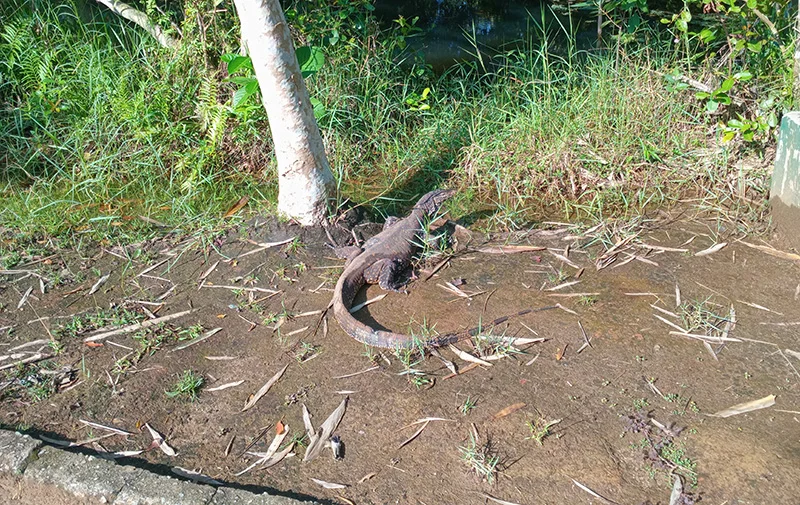
You may think sloth comes very easy,
To your kingly monitor of the shrinking marsh,
As he lies basking smugly in the morn sun,
But he is organized and alert all the while,
As he awaits his prey with patience infinite,
Free of malice, a professional of a kind,
His cumbrous body not slowing his sprite….
But note, he’s no conspirator spitting guile,
And doesn’t turn nasty unless crossed,
Nor by vengeful plans is he constantly dogged,
Unlike those animals of a more rational kind,
Whose ways have left behind a state so sorry.
By Lynn Ockersz
Midweek Review
Rajiva on Batalanda controversy, govt.’s failure in Geneva and other matters

Former President Ranil Wickremesinghe’s recent interview with Mehdi Hasan on Al Jazeera’s ‘Head-to-Head’ series has caused controversy, both in and outside Parliament, over the role played by Wickremesinghe in the counter-insurgency campaign in the late’80s.
The National People’s Power (NPP) seeking to exploit the developing story to its advantage has ended up with egg on its face as the ruling party couldn’t disassociate from the violent past of the JVP. The debate on the damning Presidential Commission report on Batalanda, on April 10, will remind the country of the atrocities perpetrated not only by the UNP, but as well as by the JVP.
The Island sought the views of former outspoken parliamentarian and one-time head of the Government Secretariat for Coordinating the Peace Process (SCOPP) Prof. Rajiva Wijesinha on a range of issues, with the focus on Batalanda and the failure on the part of the war-winning country to counter unsubstantiated war crimes accusations.
Q:
The former President and UNP leader Ranil Wickremesinghe’s interview with Al Jazeera exposed the pathetic failure on the part of Sri Lanka to address war crimes accusations and accountability issues. In the face of aggressive interviewer Mehdi Hasan on ‘Head-to-Head,’ Wickremesinghe struggled pathetically to counter unsubstantiated accusations. Six-time Premier Wickremesinghe who also served as President (July 2022-Sept. 2024) seemed incapable of defending the war-winning armed forces. However, the situation wouldn’t have deteriorated to such an extent if President Mahinda Rajapaksa, who gave resolute political leadership during that war, ensured a proper defence of our armed forces in its aftermath as well-choreographed LTTE supporters were well in place, with Western backing, to distort and tarnish that victory completely. As wartime Secretary General of the Government’s Secretariat for Coordinating the Peace Process (since June 2007 till the successful conclusion of the war) and Secretary to the Ministry of Disaster Management and Human Rights (since Jun 2008) what do you think of Wickremesinghe’s performance?
A:
It made him look very foolish, but this is not surprising since he has no proper answers for most of the questions put to him. Least surprising was his performance with regard to the forces, since for years he was part of the assault forces on the successful Army, and expecting him to defend them is like asking a fox to stand guard on chickens.
Q:
In spite of trying to overwhelm Wickremesinghe before a definitely pro-LTTE audience at London’s Conway Hall, Hasan further exposed the hatchet job he was doing by never referring to the fact that the UNP leader, in his capacity as the Yahapalana Premier, co-sponsored the treacherous Geneva Resolution in Oc., 2015, against one’s own victorious armed forces. Hasan, Wickremesinghe and three panelists, namely Frances Harrison, former BBC-Sri Lanka correspondent, Director of International Truth and Justice Project and author of ‘Still Counting the Dead: Survivors of Sri Lanka’s Hidden War,’ Dr. Madura Rasaratnam, Executive Director of PEARL (People for Equality and Relief in Lanka) and former UK and EU MP and Wickremesinghe’s presidential envoy, Niranjan Joseph de Silva Deva Aditya, never even once referred to India’s accountability during the programme recorded in late February but released in March. As a UPFA MP (2010-2015) in addition to have served as Peace Secretariat Chief and Secretary to the Disaster Management and Human Rights Ministry, could we discuss the issues at hand leaving India out?
A:
I would not call the interview a hatchet job since Hasan was basically concerned about Wickremesinghe’s woeful record with regard to human rights. In raising his despicable conduct under Jayewardene, Hasan clearly saw continuity, and Wickremesinghe laid himself open to this in that he nailed his colours to the Rajapaksa mast in order to become President, thus making it impossible for him to revert to his previous stance. Sadly, given how incompetent both Wickremesinghe and Rajapaksa were about defending the forces, one cannot expect foreigners to distinguish between them.
Q:
You are one of the many UPFA MPs who backed Maithripala Sirisena’s candidature at the 2015 presidential election. The Sirisena-Wickremesinghe duo perpetrated the despicable act of backing the Geneva Resolution against our armed forces and they should be held responsible for that. Having thrown your weight behind the campaign to defeat Mahinda Rajapaksa’s bid to secure a third term, did you feel betrayed by the Geneva Resolution? And if so, what should have the Yahapalana administration done?
A:
By 2014, given the total failure of the Rajapaksas to deal firmly with critiques of our forces, resolutions against us had started and were getting stronger every year. Mahinda Rajapaksa laid us open by sacking Dayan Jayatilleke who had built up a large majority to support our victory against the Tigers, and appointed someone who intrigued with the Americans. He failed to fulfil his commitments with regard to reforms and reconciliation, and allowed for wholesale plundering, so that I have no regrets about working against him at the 2015 election. But I did not expect Wickremesinghe and his cohorts to plunder, too, and ignore the Sirisena manifesto, which is why I parted company with the Yahapalanaya administration, within a couple of months.
I had expected a Sirisena administration to pursue some of the policies associated with the SLFP, but he was a fool and his mentor Chandrika was concerned only with revenge on the Rajapaksas. You cannot talk about betrayal when there was no faith in the first place. But I also blame the Rajapaksas for messing up the August election by attacking Sirisena and driving him further into Ranil’s arms, so that he was a pawn in his hands.
Q:
Have you advised President Mahinda Rajapaksa’s government how to counter unsubstantiated war crimes allegations propagated by various interested parties, particularly the UN, on the basis of the Panel of Experts (PoE) report released in March 2011? Did the government accept your suggestions/recommendations?
A:
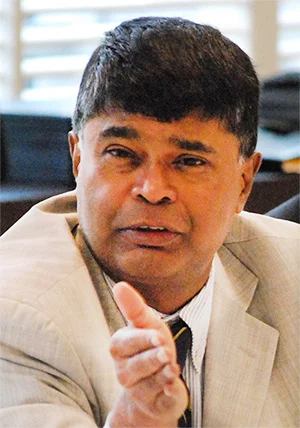
Prof. Rajiva Wijesinha
I kept trying, but Mahinda was not interested at all, and had no idea about how to conduct international relations. Sadly, his Foreign Minister was hanging around behind Namal, and proved incapable of independent thought, in his anxiety to gain further promotion. And given that I was about the only person the international community, that was not prejudiced, took seriously – I refer to the ICRC and the Japanese with whom I continued to work, and, indeed, the Americans, until the Ambassador was bullied by her doctrinaire political affairs officer into active undermining of the Rajapaksas – there was much jealousy, so I was shut out from any influence.
But even the admirable effort, headed by Godfrey Gunatilleke, was not properly used. Mahinda Rajapaksa seemed to me more concerned with providing joy rides for people rather than serious counter measures, and representation in Geneva turned into a joke, with him even undermining Tamara Kunanayagam, who, when he supported her, scored a significant victory against the Americans, in September 2011. The Ambassador, who had been intriguing with her predecessor, then told her they would get us in March, and with a little help from their friends here, they succeeded.
Q:
As the writer pointed out in his comment on Wickremesinghe’s controversial Al Jazeera interview, the former Commander-in-Chief failed to mention critically important matters that could have countered Hasan’ s line of questioning meant to humiliate Sri Lanka?
A:
How could you have expected that, since his primary concern has always been himself, not the country, let alone the armed forces?
Q:
Do you agree that Western powers and an influential section of the international media cannot stomach Sri Lanka’s triumph over separatist Tamil terrorism?
A:
There was opposition to our victory from the start, but this was strengthened by the failure to move on reconciliation, creating the impression that the victory against the Tigers was seen by the government as a victory against Tamils. The failure of the Foreign Ministry to work with journalists was lamentable, and the few exceptions – for instance the admirable Vadivel Krishnamoorthy in Chennai or Sashikala Premawardhane in Canberra – received no support at all from the Ministry establishment.
Q:
A couple of months after the 2019 presidential election, Gotabaya Rajapaksa declared his intention to withdraw from the Geneva process. On behalf of Sri Lanka that announcement was made in Geneva by the then Foreign Minister Dinesh Gunawardena, who became the Premier during Wickremesinghe’s tenure as the President. That declaration was meant to hoodwink the Sinhala community and didn’t alter the Geneva process and even today the project is continuing. As a person who had been closely involved in the overall government response to terrorism and related matters, how do you view the measures taken during Gotabaya Rajapaksa’s short presidency to counter Geneva?
A:
What measures? I am reminded of the idiocy of the responses to the Darusman report by Basil and Gotabaya Rajapaksa, who went on ego trips and produced unreadable volumes trying to get credit for themselves as to issues of little interest to the world. They were planned in response to Darusman, but when I told Gotabaya that his effort was just a narrative of action, he said that responding to Darusman was not his intention. When I said that was necessary, he told me he had asked Chief-of-Staff Roshan Goonetilleke to do that, but Roshan said he had not been asked and had not been given any resources.
My own two short booklets which took the Darusman allegations to pieces were completely ignored by the Foreign Ministry.
Q:
Against the backdrop of the Geneva betrayal in 2015 that involved the late Minister Mangala Samaraweera, how do you view President Wickremesinghe’s response to the Geneva threat?
A: Wickremesinghe did not see Geneva as a threat at all. Who exactly is to blame for the hardening of the resolution, after our Ambassador’s efforts to moderate it, will require a straightforward narrative from the Ambassador, Ravinatha Ariyasinha, who felt badly let down by his superiors. Geneva should not be seen as a threat, since as we have seen follow through is minimal, but we should rather see it as an opportunity to put our own house in order.
Q:
President Anura Kumara Dissanayake recently questioned both the loyalty and professionalism of our armed forces credited with defeating Northern and Southern terrorism. There hadn’t been a previous occasion, a President or a Premier, under any circumstances, questioned the armed forces’ loyalty or professionalism. We cannot also forget the fact that President Dissanayake is the leader of the once proscribed JVP responsible for death and destruction during 1971 and 1987-1990 terror campaigns. Let us know of your opinion on President Dissanayake’s contentious comments on the armed forces?
A: I do not see them as contentious, I think what is seen as generalizations was critiques of elements in the forces. There have been problems, as we saw from the very different approach of Sarath Fonseka and Daya Ratnayake, with regard to civilian casualties, the latter having planned a campaign in the East which led to hardly any civilian deaths. But having monitored every day, while I headed the Peace Secretariat, all allegations, and obtained explanations of what happened from the forces, I could have proved that they were more disciplined than other forces in similar circumstances.
The violence of the JVP and the LTTE and other such groups was met with violence, but the forces observed some rules which I believe the police, much more ruthlessly politicized by Jayewardene, failed to do. The difference in behaviour between the squads led for instance by Gamini Hettiarachchi and Ronnie Goonesinghe makes this clear.
Q:
Mehdi Hasan also strenuously questioned Wickremesinghe on his role in the UNP’s counter-terror campaign during the 1987-1990 period. The British-American journalists of Indian origins attacked Wickremesinghe over the Batalanda Commission report that had dealt with extra-judicial operations carried out by police, acting on the political leadership given by Wickremesinghe. What is your position?
A:
Wickremesinghe’s use of thugs’ right through his political career is well known. I still recall my disappointment, having thought better of him, when a senior member of the UNP, who disapproved thoroughly of what Jayewardene had done to his party, told me that Wickremesinghe was not honest because he used thugs. In ‘My Fair Lady,’ the heroine talks about someone to whom gin was mother’s milk, and for Wickremesinghe violence is mother’s milk, as can be seen by the horrors he associated with.
The latest revelations about Deshabandu Tennakoon, whom he appointed IGP despite his record, makes clear his approval for extra-judicial operations.
Q:
Finally, will you explain how to counter war crimes accusations as well as allegations with regard to the counter-terror campaign in the’80s?
A:
I do not think it is possible to counter allegations about the counter-terror campaign of the eighties, since many of those allegations, starting with the Welikada Prison massacre, which Wickremesinghe’s father admitted to me the government had engendered, are quite accurate. And I should stress that the worst excesses, such as the torture and murder of Wijeyedasa Liyanaarachchi, happened under Jayewardene, since there is a tendency amongst the elite to blame Premadasa. He, to give him his due, was genuine about a ceasefire, which the JVP ignored, foolishly in my view though they may have had doubts about Ranjan Wijeratne’s bona fides.
With regard to war crimes accusations, I have shown how, in my ‘Hard Talk’ interview, which you failed to mention in describing Wickeremesinghe’s failure to respond coherently to Hasan. The speeches Dayan Jayatilleke and I made in Geneva make clear what needed and still needs to be done, but clear sighted arguments based on a moral perspective that is more focused than the meanderings, and the frequent hypocrisy, of critics will not now be easy for the country to furnish.
By Shamindra Ferdinando
-
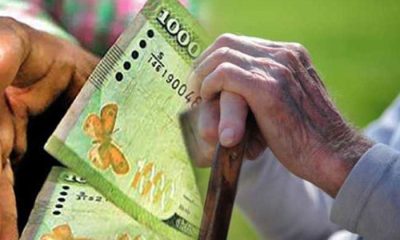
 News6 days ago
News6 days agoSeniors welcome three percent increase in deposit rates
-
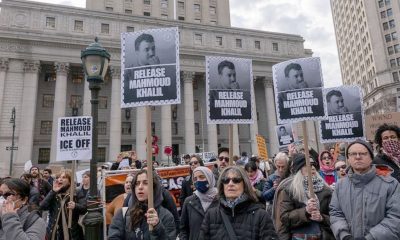
 Features6 days ago
Features6 days agoThe US, Israel, Palestine, and Mahmoud Khalil
-
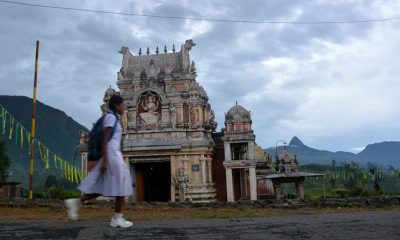
 News6 days ago
News6 days agoScholarships for children of estate workers now open
-
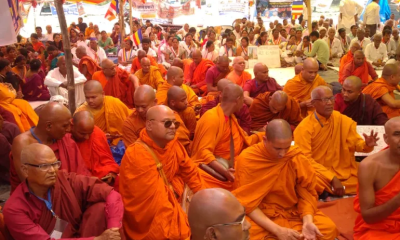
 Foreign News5 days ago
Foreign News5 days agoBuddhism’s holiest site erupts in protests over Hindu ‘control’ of shrine
-
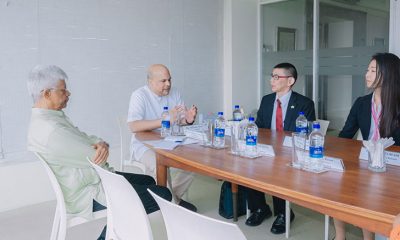
 News6 days ago
News6 days agoJapanese Defence Delegation visits Pathfinder
-

 Features3 days ago
Features3 days agoCelebrating 25 Years of Excellence: The Silver Jubilee of SLIIT – PART I
-

 Editorial5 days ago
Editorial5 days agoWhen tractors become cars!
-
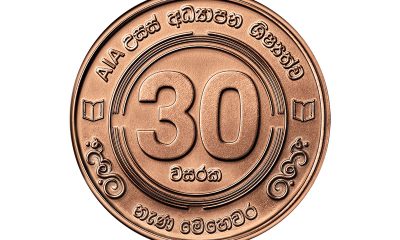
 Business1 day ago
Business1 day agoAIA Higher Education Scholarships Programme celebrating 30-year journey


